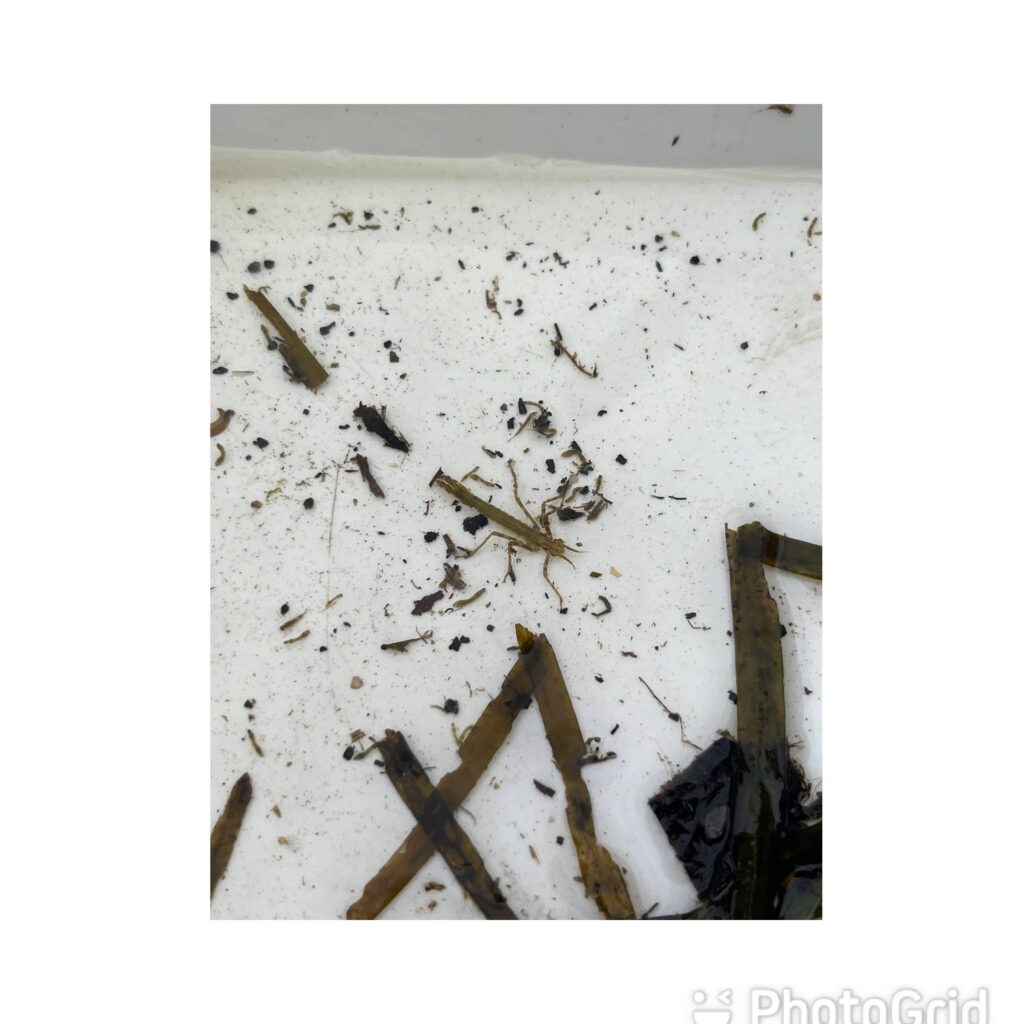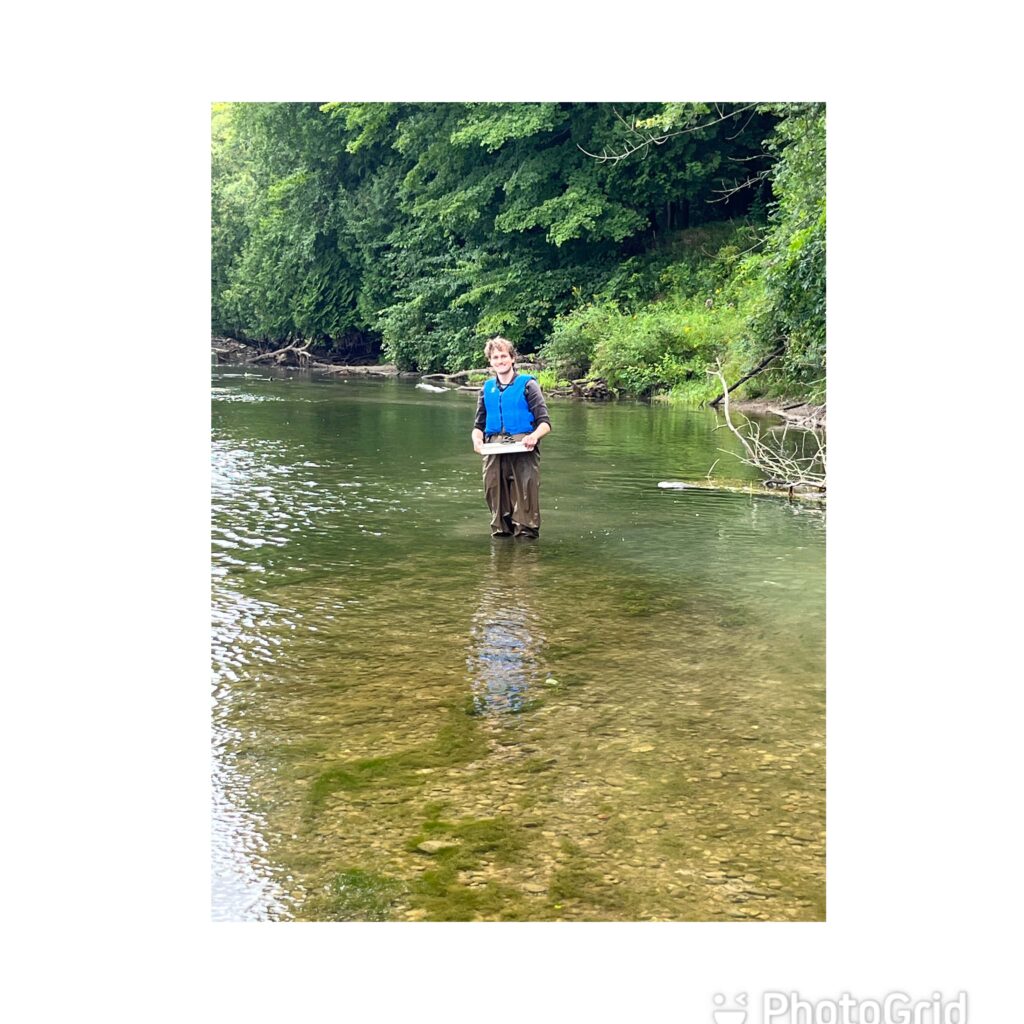
Nicklas Smith, a third-year student majoring in wildlife biology, is from the Genesee County area, with a strong connection to Flint. Last summer, he was inspired by Larissa, a graduate student working as a lab assistant from a previous biology class. When Nicklas expressed his interest in field research, Larissa told him to reach out to faculty for opportunities, pushing him to delve deeper into the field. With this newfound interest, he reached out to Dr. Heather Dawson, a respected professor in wildlife biology at the University of Michigan Flint. His goal was to gain hands-on experience in the practical aspects of wildlife biology working with Dr. Dawson’s graduate students. As a second-year student, Nicklas had limited exposure to fieldwork, so he wanted to use this opportunity to reinforce his passion and commitment to his chosen career path. He approached Dr. Dawson with a simple request: the chance to shadow her team and provide assistance to gain a deeper understanding of wildlife biology. The main goal of this research is to inquire about the ecology of the Flint River and how it might evolve in the future, especially after dam removal. His primary focus lies in understanding the Flint River’s present ecosystem, the variety of species present, and their interactions within the river’s current conditions.

Nicklas Smith has been actively engaged in three key projects of the Flint River Ecology Study, overseen by Dr. Dawson. In the first project, the primary objective was to sample fish species from the river using cast nets, hook and line, and electrofishing. The team tagged these species, recorded their size and weight, and occasionally conducted gastric lavage to investigate their stomach contents and dietary habits. This research helps to evaluate the fish population dynamics both upstream and downstream of the Flint River. The second project focuses on employing acoustic telemetry tagging within fish to monitor their movements. The aim is to gain insights into how different fish species, varying in size, utilize distinct parts of the river. Nicklas and the graduate students he assists seek to identify the fish’s preferred habitats and anticipate potential changes in behavior following the dam’s removal. The third project centers on assessing water quality through visual assessment, macroinvertebrate sampling, and the use of data loggers. These loggers supply information about the water’s temperature, pH levels, dissolved oxygen content, and conductivity. While Nicklas isn’t directly involved in the project’s digital data entry for the loggers, he does collect them, sometimes needing to use a canoe to get to them. Nicklas and the graduate students assess the water quality of the Flint River with that of other Michigan rivers through the use of wet nets and the use of Hester-Dendy samplers, in which the macroinvertebrates make temporary homes, which allow for the capture of the small organisms. These tools are used to evaluate macroinvertebrate populations, including semi-aquatic insect larvae, aquatic worms, and snails. This analysis provides valuable insights into the diversity of these species in different river locations, shedding light on variations in water quality and the health of the ecosystem.

Nicklas Smith and the graduate students observed that the Flint River exhibited higher turbidity compared to some other rivers. Nevertheless, it had a considerable amount of habitat diversity, particularly in the upstream area above the dam. This region featured an abundance of loose rocks and fallen trees on the riverbed, providing ample hiding spaces for various aquatic life, including fish and macroinvertebrates. The Flint River’s characteristics around the UM campus made it an ideal habitat, especially for catfish, which could be found sheltering under rubble and similar structures by the riverbanks. The Flint River boasts significant biodiversity. However, below the dam on campus, the ecosystem differed substantially. In this area, there was a noticeable absence of many macroinvertebrate species. Instead, larger fish predominated, as organisms from upstream often washed over the weir and became trapped, providing a source of food for these larger fish species downstream.

Nicklas Smith has deepened his understanding of aquatic life, habitat diversity, and water quality through three significant projects related to dam removal and river ecosystems. His work in assessing the Flint River’s habitat, fish populations, and macroinvertebrate populations above and below the dam has provided valuable insights into the river’s current state.